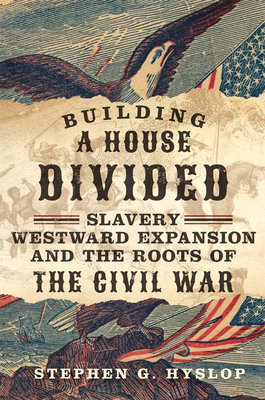By the time Abraham Lincoln asserted in 1858 that the nation could not "endure permanently half slave and half free," the rift that would split the country in civil war was well defined. The origins and evolution of the coming conflict between North and South can in fact be traced back to the early years of the American Republic, as Stephen G. Hyslop demonstrates in
Building a House Divided, an exploration of how the incipient fissure between the Union's initial slave states and free states--or those where slaves were gradually being emancipated--lengthened and deepened as the nation advanced westward.
Hyslop focuses on four prominent slaveholding expansionists who were intent on preserving the Union but nonetheless helped build what Lincoln called a house divided: Presidents Thomas Jefferson, Andrew Jackson, and James K. Polk and Senator Stephen A. Douglas of Illinois, who managed a plantation in Mississippi bequeathed by his father-in-law. Hyslop examines what these men did, collectively and individually, to further what Jefferson called an "empire of liberty," though it kept millions of Black people in bondage. Along with these major figures, in all their conflicts and contradictions, he considers other American expansionists who engaged in and helped extend slavery--among them William Clark, Stephen Austin, and President John Tyler--as well as examples of principled opposition to the extension of slavery by northerners such as John Quincy Adams and southerners like Henry Clay and Thomas Hart Benton, who held slaves but placed preserving the Union above extending slavery across the continent.
The long view of the path to the Civil War, as charted through the Jeffersonian and Jacksonian eras in this book, reveals the critical fault in the nation's foundation, exacerbated by slaveholding expansionists like Jefferson, Jackson, Polk, and Douglas, until the house they built upon it could no longer stand for two opposite ideas at once.










